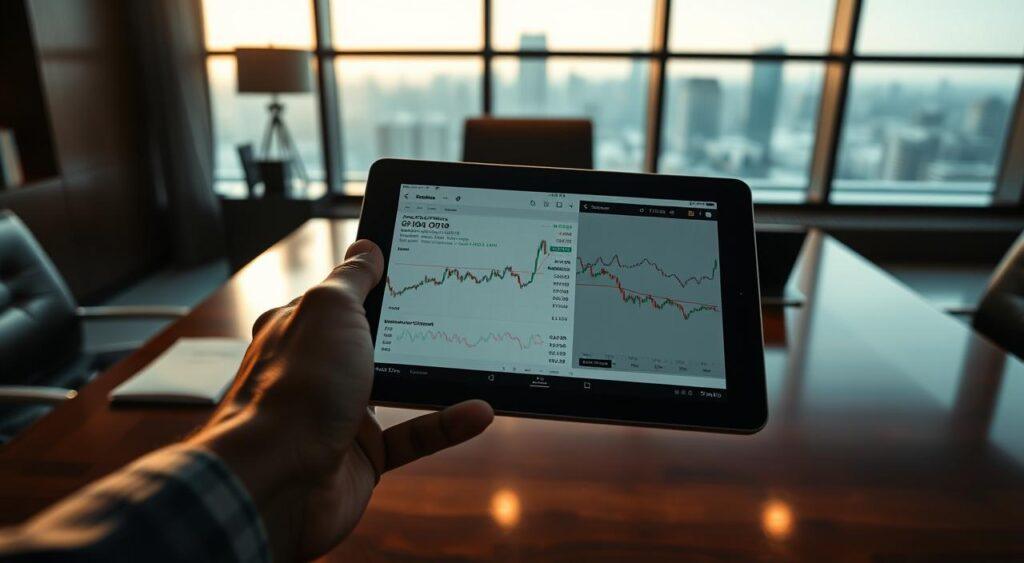Imagine building a life that flourishes on uncertainty, without risking everything. This is the essence of the optionality mental model. It started in finance and now helps us make decisions with big upsides and small downsides.
It’s about being flexible, grabbing chances, and avoiding big losses.
Thought leaders like Nassim Taleb and companies like Amazon and Sequoia Capital have made optionality famous. It’s about having the freedom to act without being bound by it. In a world full of surprises, optionality lets you create many good paths while keeping room to change direction.
This guide will show you how optionality improves decision-making, boosts resilience, and opens up more opportunities in business, investing, and everyday life. You’ll discover how to use it in your career, financial planning, and personal growth.
The Optionality mental model is a powerful tool for thriving in uncertain times.
Key Takeaways
- Optionality mental model: Originated in finance but applies to everyday decisions
- Focuses on keeping choices open at low cost
- Helps balance risk and opportunity
- Used by successful investors and strategists
- Builds resilience in fast-changing environments
How might your next decision change if you prioritized flexibility in your thinking? Let’s explore how this powerful mental models framework turns uncertainty into a business advantage over time.
Introduction to the Optionality Mental Model
Ever wished for a strategy that turns unpredictability into an asset? This approach—rooted in finance—focuses on creating low-cost choices with outsized potential. Think of it as planting seeds that might grow into towering trees, without risking your entire garden.
Traditional frameworks push us toward yes/no answers. But in a complex world, binary thinking often backfires. Instead, this method lets you stay agile.
As author Nassim Taleb notes, true strength comes from setups where you gain from surprises without suffering major losses.
Consider learning three skills instead of one. If demand shifts, you pivot. Or saving 10% monthly—not for a specific goal, but to seize unexpected opportunities. These moves cost little today but unlock tomorrow’s possibilities.
Some confuse this with indecision. It’s not. Strategic flexibility means choosing when to commit, not avoiding choices. Like a chef keeping ingredients ready for multiple recipes, you adapt as circumstances evolve.
How might your next move change if you focused on preserving options rather than chasing certainty?
Understanding Optionality from a Financial Perspective

How did financial markets shape a tool for everyday decisions? It started with traders seeking protection against unpredictable swings. In 1973, economists Fischer Black, Myron Scholes, and Robert Merton cracked the code for valuing options- contracts giving buyers the right, not duty, to act later.
This thinking reflects important mental models that can be applied to various aspects of life and decision-making.
The Origins in Finance and Options Trading
Their Nobel-winning model calculated option prices using factors like time and market volatility. Imagine paying $5 today for the choice to buy stock at $100 next month.
If prices soar, you profit. If they crash? You lose only the initial $5. This asymmetry changed how investors manage risk.
Key Elements: Upside Potential and Limited Downside
Financial options work like insurance policies. You pay a small cost now to avoid big losses later. The same logic applies beyond trading. Learning coding while working in marketing? That’s buying a career “option” with minimal effort.
Volatility boosts an option’s value. When markets shift rapidly, having future choices matters most. Companies now use this thinking for R&D investments. Test ideas cheaply, then scale what works.
Could paying a small price today for tomorrow’s flexibility transform your next big decision?
Optionality in Career Growth and Skill Development
Career paths aren’t straight lines anymore—they’re networks of possibilities. A 2019 McKinsey study revealed workers with adaptable abilities were 52% more likely to land higher-paying roles.
This shift rewards those who build diverse skillsets, turning uncertainty into career momentum.
The Benefits of Broad, Transferable Skills
Learning coding while in marketing or mastering project management in healthcare creates career insurance. These abilities act as bridges between industries.
When tech disrupted finance, bankers with data analysis skills transitioned to fintech roles. Teachers who learned digital tools thrived during remote learning shifts.
Specialists often face dead ends when their niche fades. Generalists? They pivot. Think of skills as tools in a toolkit—the more versatile your set, the more problems you can solve.
Soft skills like communication and critical thinking remain valuable across every field.
Start small. Dedicate 30 minutes daily to learn platforms like Excel or collaboration tools. Attend cross-departmental meetings to understand adjacent roles.
Over time, these efforts compound into new opportunities without demanding drastic career overhauls.
What skill could you explore this week to add flexibility to your professional journey?
Strategic Career Optionality: Taleb’s Barbell Approach
Nassim Taleb’s “barbell strategy” is a smart way to handle your career. It mixes safe jobs with risky, high-reward projects. Think of having a steady job while starting a business or working on creative projects.
This approach helps you avoid being stuck in one job. You keep a steady income while exploring new opportunities. It’s the opposite of relying only on one job that might not last.
A 2022 Deloitte study found workers with diverse income sources were 48% more financially stable during tough times. By using a barbell strategy, you open up more options and reduce career risks.
How the Optionality Mental Model Enhances Decision Making

Why do smart people make poor decisions? Often because hidden biases trap them in narrow thinking. This framework helps you spot these traps and create escape routes by using mental models that allow for better options.
For example, consider the quality of information you rely on; it can influence your decisions. By asking the right questions, you can avoid common problems that others might face.
Reducing Cognitive Biases with Strategic Flexibility
Our brains love shortcuts—until they backfire. Confirmation bias makes us seek proof we’re right. Anchoring locks us to first impressions. But when you actively maintain options, you:
| Bias | Traditional Approach | Flexible Strategy |
|---|---|---|
| Confirmation | Seek supporting evidence | Test 3+ alternatives |
| Sunk Cost | Keep investing in failures | Set exit criteria upfront |
| Anchoring | Focus on initial data | Reassess weekly |
Leaders at Blockbuster clung to store rentals despite Netflix’s rise. Those using flexible thinking pivoted to streaming models early.
This is a great place to consider the sunk cost fallacy mental model. Optionality tells us to cut our losses early. But the sunk cost fallacy makes us keep bad decisions because we’ve already invested time or money.
Increasing Decision Flexibility in Uncertain Environments
During the 2020 pandemic, restaurants with takeout options survived. Those relying solely on dine-in closed. This shows the power of reversible decisions—choices you can adjust as situations change.
Try this approach:
- Label choices as “fixable” or “final”
- Spend 80% effort on irreversible decisions
- Use collaborative decision-making tools for complex problems
Amazon’s “70% rule” demonstrates this well—act when you have 70% of needed information, preserving room to adapt. How might categorizing your next choice change its outcome?
The barbell strategy is a form of optionality in action. It lets you balance stability and risk. This way, you minimize regret and maximize long-term adaptability.
Real-World Business Examples and Strategic Applications
What separates thriving enterprises from those stuck in rigid patterns? The answer lies in designing multiple paths to success. Top performers across industries treat uncertainty as raw material for innovation.
Consider how tech giants test ideas. Amazon initially built cloud infrastructure for its own needs. When they realized other companies needed similar solutions, AWS became a $62 billion revenue stream.
This pivot wasn’t luck—it was built on systems that allowed scaling successful experiments.
Venture Capital and High-Stakes Investments
Sequoia Capital’s early bet on WhatsApp shows the power of strategic investment. They put $8 million into the messaging app, which later sold for $19 billion. How? By spreading funds across 20+ startups knowing most fail, but a few deliver 100x returns.
Modern business strategies mirror this approach:
- Phased product launches test market demand with minimal risk
- Partnerships with complementary brands expand reach without full mergers
- Pilot programs gather data before company-wide implementation
Starbucks’ mobile order system started as a 10-store trial. After proving popular, it rolled out nationwide—now handling 25% of all U.S. orders. Could your next project benefit from small-scale testing first?
Maximizing Upside Potential with Limited Downside Risk

How do top performers turn uncertainty into opportunity? They design actions where potential gains dwarf possible losses. Like buying a lottery ticket for $2 with a $500 million jackpot—except in real-world scenarios where odds improve through smart planning.
True options create favorable imbalances. A real estate investor might secure land rights for 2% of the property’s value. If zoning laws change favorably, they profit massively. If not? They lose only the initial fee.
This asymmetry powers wealth-building across industries.
| Strategy | Cost | Potential Outcome |
|---|---|---|
| Learning Python basics | 20 hours | Career pivot to data science |
| Testing 3 marketing channels | $1,500 budget | Discovering 10x ROI platform |
| Pre-negotiating vendor terms | 1 meeting weekly | Scaling operations 3x faster |
Beware false flexibility. Some “options” drain resources without real potential. A monthly software subscription you never use? That’s dead weight. Successful creators regularly audit their choices, asking: “Does this door actually open?”
Calculate costs versus potential. If mastering a skill takes 100 hours but could double your income, the math favors action. If attending endless networking events yields no partnerships? Redirect that time. Balance comes from tracking outcomes, not just intentions.
What low-cost experiment could you start today to uncover hidden opportunities?
False Optionality: Avoiding Hidden Drains
Not every choice is worth it. Some seem like good options but really waste time and money. For example:
- Subscribing to tools or platforms you never use
- Starting side projects with no clear path to ROI
- Maintaining inactive social or professional commitments
These “false options” clutter your mind and cost you opportunities. True optionality means asymmetric returns—a small cost for a big gain. Check your commitments often and ask: “What’s the real benefit here?”
Let go of what doesn’t help you grow. This frees up room for real options that can grow over time.
Applying Option Value Thinking in Personal Life
Life rarely follows a straight path—it zigs when we expect zags. Preparing for uncertainty means designing multiple paths forward through small, intentional choices.
Like keeping emergency savings while investing in self-education, you build resilience through layered possibilities, using mental models to make better decisions.
Optionality Mental Model:Embracing Flexibility in Daily Decisions
Consider housing choices. Renting near a transit hub offers more job options than buying in a remote suburb. A 2023 Zillow study showed urban renters changed jobs 37% more often than homeowners—without relocation costs holding them back.
Relationships thrive with similar thinking. Meet diverse people through hobby groups or professional networks. A teacher who volunteers at tech meetups might discover a career pivot into EdTech. These connections act as social bridges when life shifts direction.
Even hobbies create value. Baking skills could lead to a weekend business. Gardening knowledge might help during supply chain disruptions. The key? Treat interests as explorations rather than fixed commitments.
Start today:
- Schedule one coffee chat monthly outside your usual circles
- Allocate 5% of savings to learning budgets
- Test living in new neighborhoods through short-term rentals
What small step today could plant seeds for tomorrow’s possibilities?
The Importance of Reversible Versus Irreversible Decisions
Jeff Bezos transformed Amazon by treating choices like doors—some swing both ways. His “two-way door” rule separates quick, reversible decisions from permanent ones requiring deeper analysis. This approach prevents wasted time on choices you can easily undo.
Reversible decisions—like testing a new workflow—cost little to reverse. Bezos allocates 70% of meeting time to irreversible moves like acquisitions. Ask: “Can I walk this back?” Consider financial costs, effort to undo, and lost opportunities if you pivot.
Many overthink reversible choices. Launching a trial product feature? Start small instead of endless planning. True irreversible decisions—career changes or home purchases—demand thorough vetting of consequences.
Try this process:
- Label every decision as “adjustable” or “final”
- Set deadlines for reversible choices
- Map worst-case consequences for permanent moves
Bezos’s strategy freed teams to act faster on 90% of daily choices. What action could you accelerate today by recognizing its reversibility?
Conclusion
The optionality mental model shows us that being flexible is not the same as being indecisive. It’s actually a powerful strategy. In a world full of surprises, those who choose optionality are more likely to do well, adapt, and win.
Looking to improve your thinking in tough situations? Check out the Two-Way Door mental model and Sunk Cost Fallacy mental model. They offer more insights into making smart decisions.
Optionality is key in business, planning your career, or growing personally. It helps you manage risks while increasing your chances of success.
It’s a tool for making better choices, dealing with uncertainty, and finding new chances.


